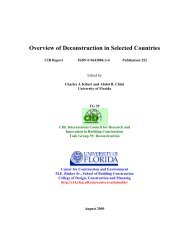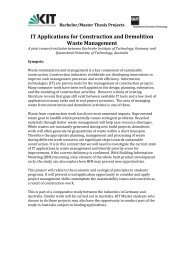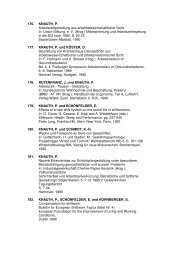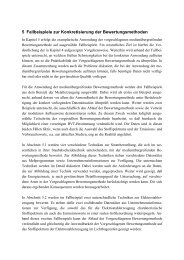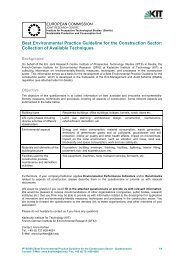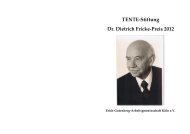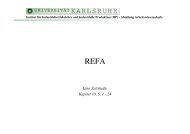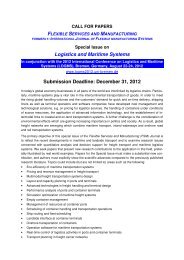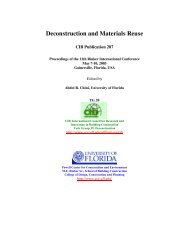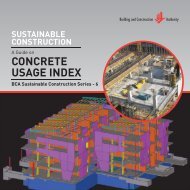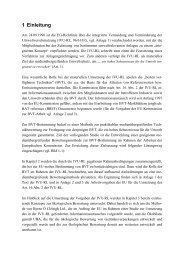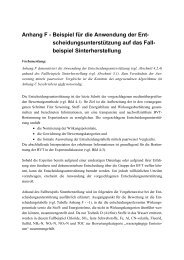Waste reduction final report -4 - Test Input
Waste reduction final report -4 - Test Input
Waste reduction final report -4 - Test Input
You also want an ePaper? Increase the reach of your titles
YUMPU automatically turns print PDFs into web optimized ePapers that Google loves.
cannot be recovered. Also permitted is an environmentally sound treatment with other<br />
thermal processes.<br />
Art. 12 Obligation to recover<br />
1 The authority may oblige owners of industrial, commercial or service undertakings to:<br />
a. determine whether ways of recovering their waste already exist or could be set up<br />
and<br />
b. inform the authority of the results of their investigations.<br />
2 It may transfer the obligations laid down in Paragraph 1 to the owners of waste treatment<br />
facilities which accept numerous small quantities of the same type of waste.<br />
3 It may demand from the owners of waste to provide for the recovery of specific types of<br />
waste if:<br />
a. the recovering is technically feasible and economically viable;<br />
b. the environmental impact will be smaller compared to disposal and new production.<br />
Art. 15 Register of waste<br />
1 Every year, the Cantons shall draw up a register of the quantities of waste generated within<br />
their territory. It shall be broken down according to the different types of waste,<br />
municipalities, waste treatment plants, and type of treatment, notably, recovery, incineration,<br />
deposition on landfills and temporary storage.<br />
2 They shall respectively send a copy to the Federal Office of Environment, Forests and<br />
Landscape (Federal Office).<br />
Art. 16 <strong>Waste</strong> management planning<br />
3 The following principles shall apply when drawing up waste management plans:<br />
a. <strong>Waste</strong> shall be recovered as far as possible, provided that the environmental impact<br />
is smaller than disposal and new production;<br />
b. <strong>Waste</strong> which is not recovered shall, as much as possible, be treated so that it can be<br />
deposited on a landfill for inert materials or for stabilized residues:<br />
c. Municipal waste, sewage sludge and combustible fractions of construction waste<br />
and other burnable waste which are not recovered shall be incinerated (Art 11).<br />
d. Unpolluted excavated material and spoil shall be used for recultivation;<br />
e. <strong>Waste</strong> shall be transported by rail if this is economically viable and the<br />
environmental impact is smaller than other means of transport.<br />
Regulation on the transport of waste (VeVa)<br />
Art. 2 Abfallverzeichnis<br />
1 Das Eidgenössische Departement für Umwelt, Verkehr, Energie und Kommunikation<br />
(UVEK) erlässt eine Verordnung mit einem Abfallverzeichnis. Es berücksichtigt dabei<br />
das Abfallverzeichnis der Europäischen Gemeinschaft4.<br />
2 Es bezeichnet im Abfallverzeichnis als:<br />
a. Sonderabfälle: Abfälle, deren umweltverträgliche Entsorgung auf Grund ihrer<br />
Zusammensetzung, ihrer chemisch-physikalischen oder ihrer biologischen<br />
Eigenschaften auch im Inlandverkehr umfassende besondere technische und<br />
organisatorische Massnahmen erfordert;<br />
b. andere kontrollpflichtige Abfälle: Abfälle, deren umweltverträgliche Entsorgung<br />
auf Grund ihrer Zusammensetzung, ihrer chemisch-physikalischen oder ihrer<br />
biologischen Eigenschaften auch im Inlandverkehr beschränkte besondere technische<br />
und organisatorische Massnahmen erfordert.<br />
156



